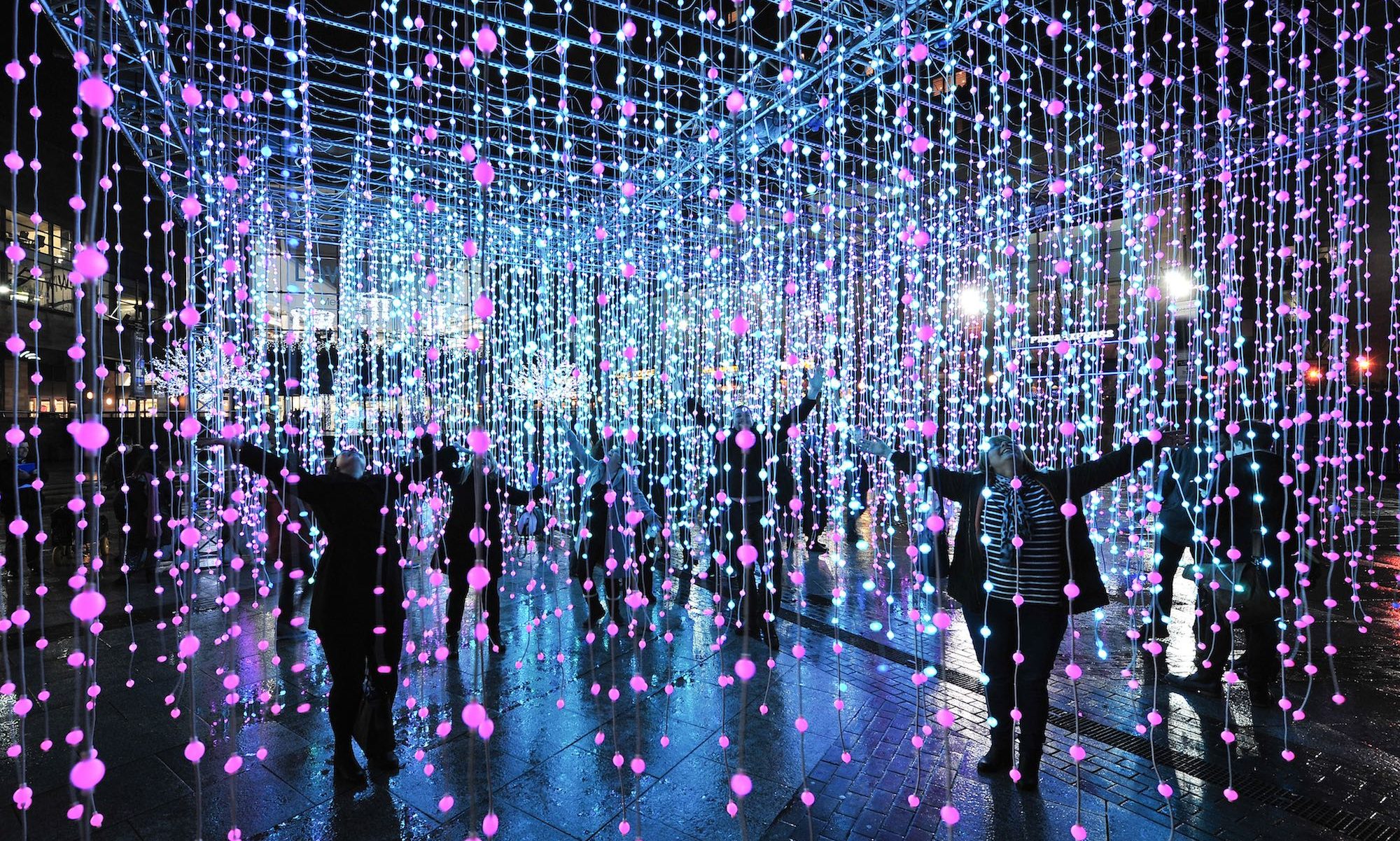By: Everett Johnson
The process of building this dragon started with learning how to mold wire into a dragon figure. It required me to learn different weaves and twisting techniques to make the sculpture of the dragon. I had to individually craft each part of this dragon.

After I was done molding the dragon with metal wire, I then had to solder LEDs together in pairs of 7 and attach them one by one onto the sculpture. After that I had to use wire to individually attach each set of wires together with solder. As I went one by one, I made sure to check and light up individual sections of the dragon to make sure that it still worked. After many hours of work I finally finished the dragon.
Below are the final images of my dragon finally all lit up and completed. The Dragon was hanging in the sub-basement of fuller for the presentation. It has since been removed but will now be hanging in my living room as a decoration.
The Dragon is made entirely from LED’s, Aluminum Wire, and fishing wire to hang it from the ceiling.

























